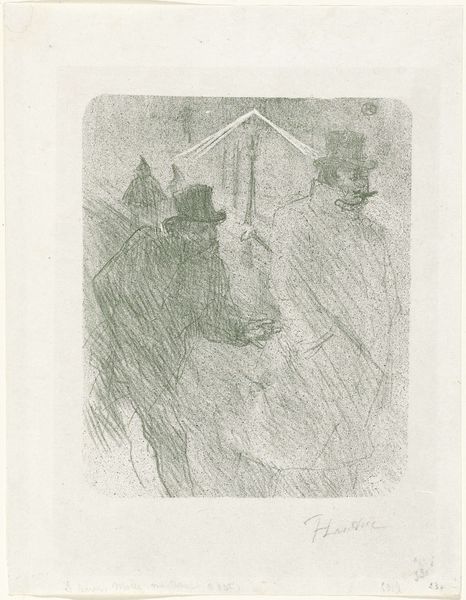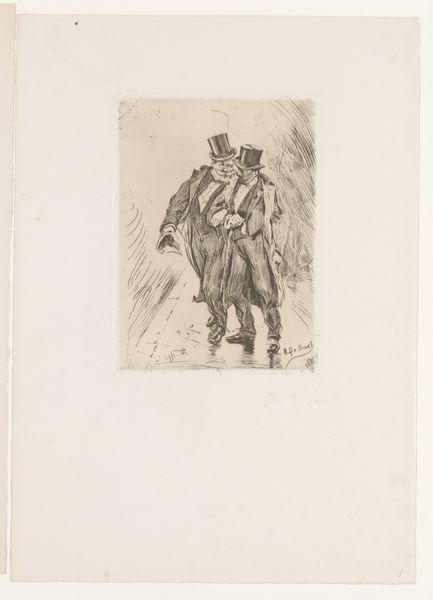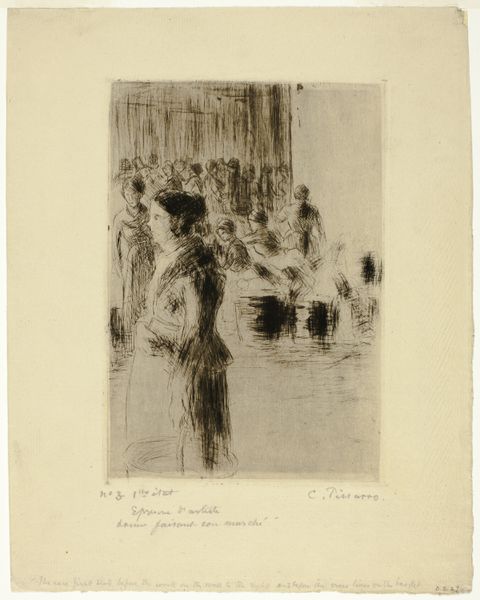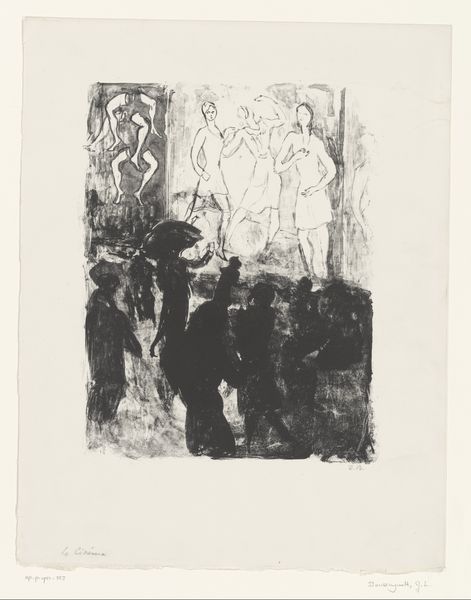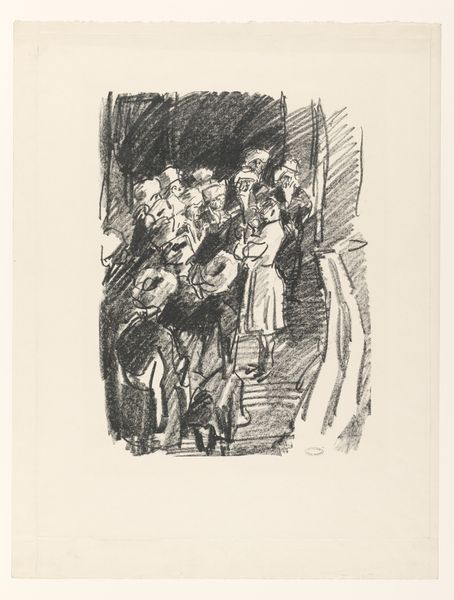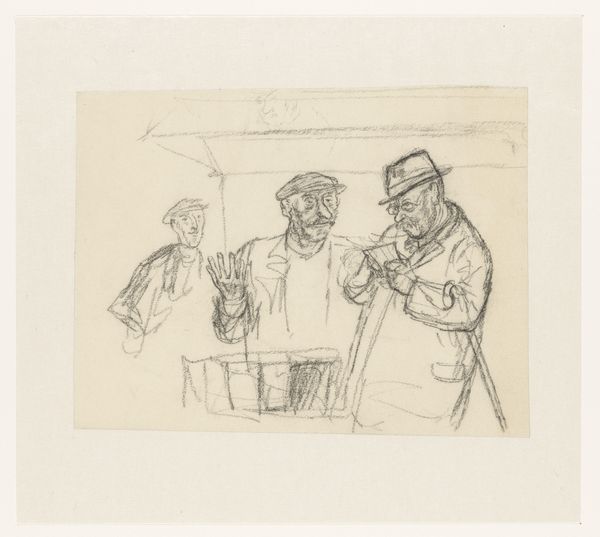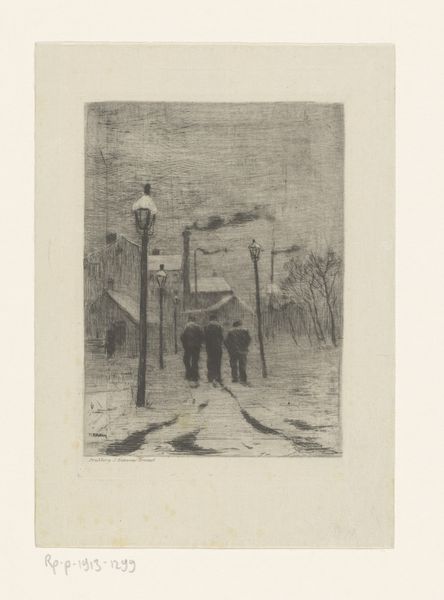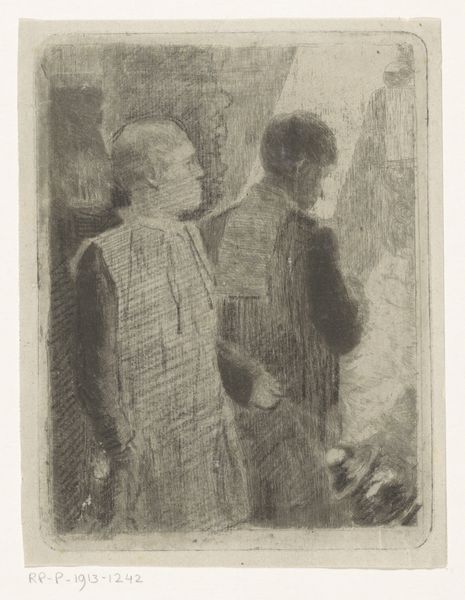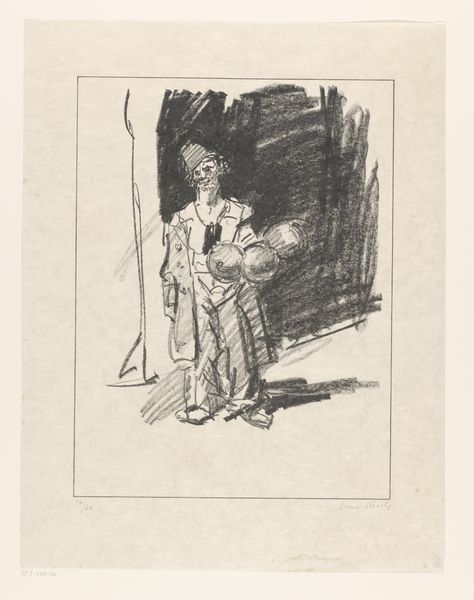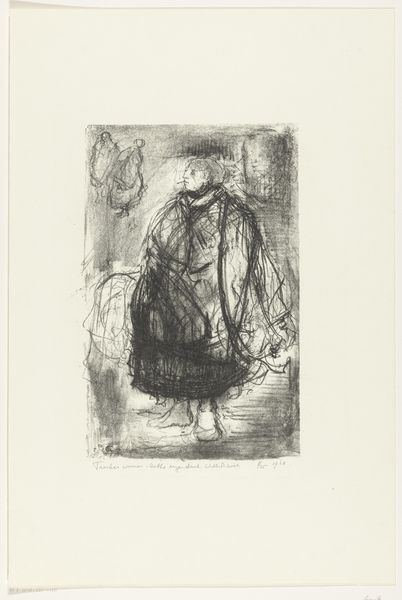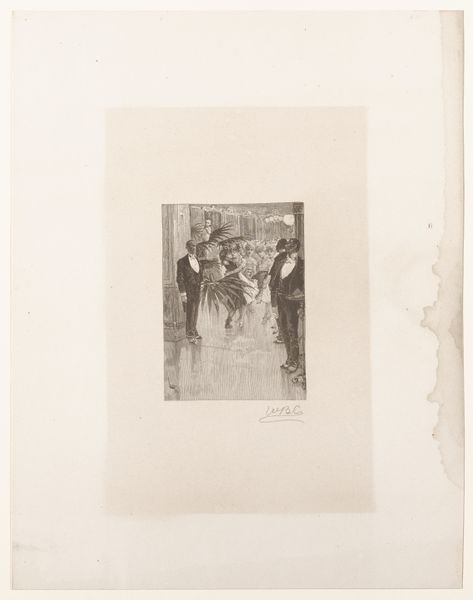
drawing, pencil, graphite
#
portrait
#
pencil drawn
#
drawing
#
light pencil work
#
pencil sketch
#
landscape
#
figuration
#
pencil
#
symbolism
#
graphite
#
cityscape
#
pencil work
Dimensions: height 159 mm, width 97 mm
Copyright: Rijks Museum: Open Domain
Editor: Here we have Jan Toorop's "Lezende man aan het einde van een rij," a graphite and pencil drawing from 1886, housed at the Rijksmuseum. It has a somewhat gloomy mood, a blurry feeling like it's a rainy day, or even just a half-forgotten memory. What is your interpretation? Curator: Indeed, the atmospheric conditions of the piece are immediately striking. Notice how the composition directs the eye, how the repetition of vertical lines generates a powerful sense of recession into the background, the linear perspective of the figures receding to the rear. How does this affect the viewers experience? Editor: Well, it does give a strong sense of depth. I find myself focusing on the figure closest to us because of the higher contrast compared to the background figures. He stands out due to the detailed pencil work, while the figures behind him blur into indistinct shapes. Curator: Precisely. Consider then the surface and medium. The contrast between the solid, shaded form of the foreground figure and the light pencil work used in the background to express reflection, wet pavement, etc. The artist plays with depth through textural contrast, what art historians have called ‘optical mixing’. What’s your understanding of how light interacts with these surfaces? Editor: Ah, it seems that by varying the pencil pressure, he manipulates light and shadow, giving a translucent quality to the rain and figures behind, unlike the more solid man in the foreground. Curator: Precisely. One might say Toorop is inviting us to contemplate the formal devices as an integrated and unified system of marks. Editor: That’s interesting, looking at it from a formal perspective changes my initial reading of it entirely! Curator: Indeed. By focusing on the artist's formal approach and treatment of the graphic surface we may uncover more nuanced considerations than previously apparent.
Comments
No comments
Be the first to comment and join the conversation on the ultimate creative platform.

